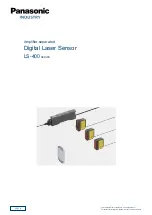
Data Files
©
2016-2017 SR Research Ltd.
71
4 Data Files
The EDF file format is used by the EyeLink tracker and supporting applications
to record eye-movements and other data. It is designed to be space-efficient and
flexible, allowing for complete records of experimental sessions and data. It
adapts to monocular and binocular recording, with compatibility support for
future enhancements. The EyeLink Portable Duo EDF file format is backwards-
compatible with the earlier EyeLink I, II, 1000, and 1000 Plus EDF file format.
The EDF file format is a platform-portable binary record of eye-position and
synchronization events. This format is used directly by the EyeLink Data Viewer
application, and may be translated by the EDF2ASC utility into a text-format
ASC file (see section 4.7 “EDF File Utilities” for detailed discussions). This file
lists most of the important data in the EDF file in a more easily-accessible
format, but at the expense of a much larger file size.
Note: By changing the File Sample Filter from Extra to Standard or Off, this will
affect EyeLink Data Viewer, EDF2ASC, and other analysis tool data
calculations. SR Research Ltd. strongly recommends keeping the default file
sample filter setting (“Extra”).
4.1
File Contents
The EDF files contain two streams of data: eye-position samples (up to 2000
samples per second produced from the EyeLink tracker) and events (eye-
movement events such as saccades and fixations, participant responses, and
synchronizing events from the experimental application). Both streams are
time-synchronized for easy analysis. The file is organized into blocks of data,
one for each recording session. Each block may have samples, events, or both.
Also, the data items recorded in each sample or event may be configured at
recording, and are available at the block start to aid in analysis.
Samples are time-stamped in milliseconds and contain monocular or binocular
eye-position data in eye-rotation angle (HREF) or display-gaze coordinates
(GAZE). Pupil sizes as area or diameter are also recorded. Samples may also
contain eye-movement resolution (pixels per degree of visual angle, used to
compute true velocity or saccadic amplitudes), as well as button presses and
the status of digital inputs.
Eye-movement events record eye position changes identified by the EyeLink
tracker's on-line parser. These events include fixations, blinks, and saccades.
Both the onset and end of these events are marked, allowing samples to be
assigned to eye-movement periods without complex algorithms. Important data
for analysis such as average position for fixations and peak velocity for
saccades is also recorded in the end events. Other events record participant
responses (such as button presses) and synchronization and data messages
















































